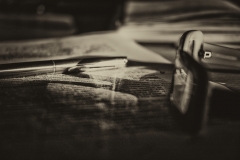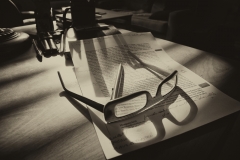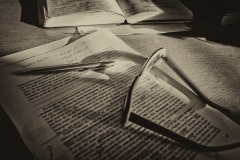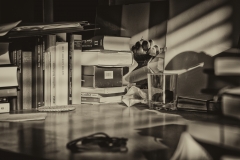This morning, I was writing and taking some pictures, like most days during last week. I have spent a lot of time with editing, as it took a long time to finish the section I have closed today: The part is about the very moment of photography, i.e., how it feels to release the shutter instead of just pressing a button.
Aside some own thoughts, I was using Jean-Pierre Montier’s comments on Henri Cartier-Bresson’s reading of Eugen Herrigel’s book “Zen in the Art of Archery”: Cartier-Bresson was applying the spirit of Zen in his photography by likening the camera to the bow. He focused on emptiness as a source of spontaneity and creativity. It is this certain kind of emptiness that Zen introduces not as exhaustion but formless vastness, able to assume any form, like an empty canvas. Understanding emptiness as a dynamic source is part of the heart sutra’s essence, stating “form is emptiness, and emptiness is form”. Such an emptiness is not a blank nothingness but an absence of predetermined thought — providing a clear mind that is able to perceive and apprehend. Rooted in this emptiness, Cartier-Bresson’s shooting might have turned into doing by non-doing (wu wei), when one’s doing is not so much an act contrasting but facilitating the flow. One is not acting but enacting the moment. And that is the moment when pressing the button turns into releasing the shutter.
Writing about this topic is challenging: In telling a story it is possible to say most things, while it is hard to explain without pain; on the other hand, a more essayistic style allows for explanation but puts boundaries on intuitive accounts. Sometimes I envy contexts where simple explanations are sufficient and no additional story arcs are necessary to integrate some thought. But an explanation does not reach beyond the explainable. And that is quite a restriction.




